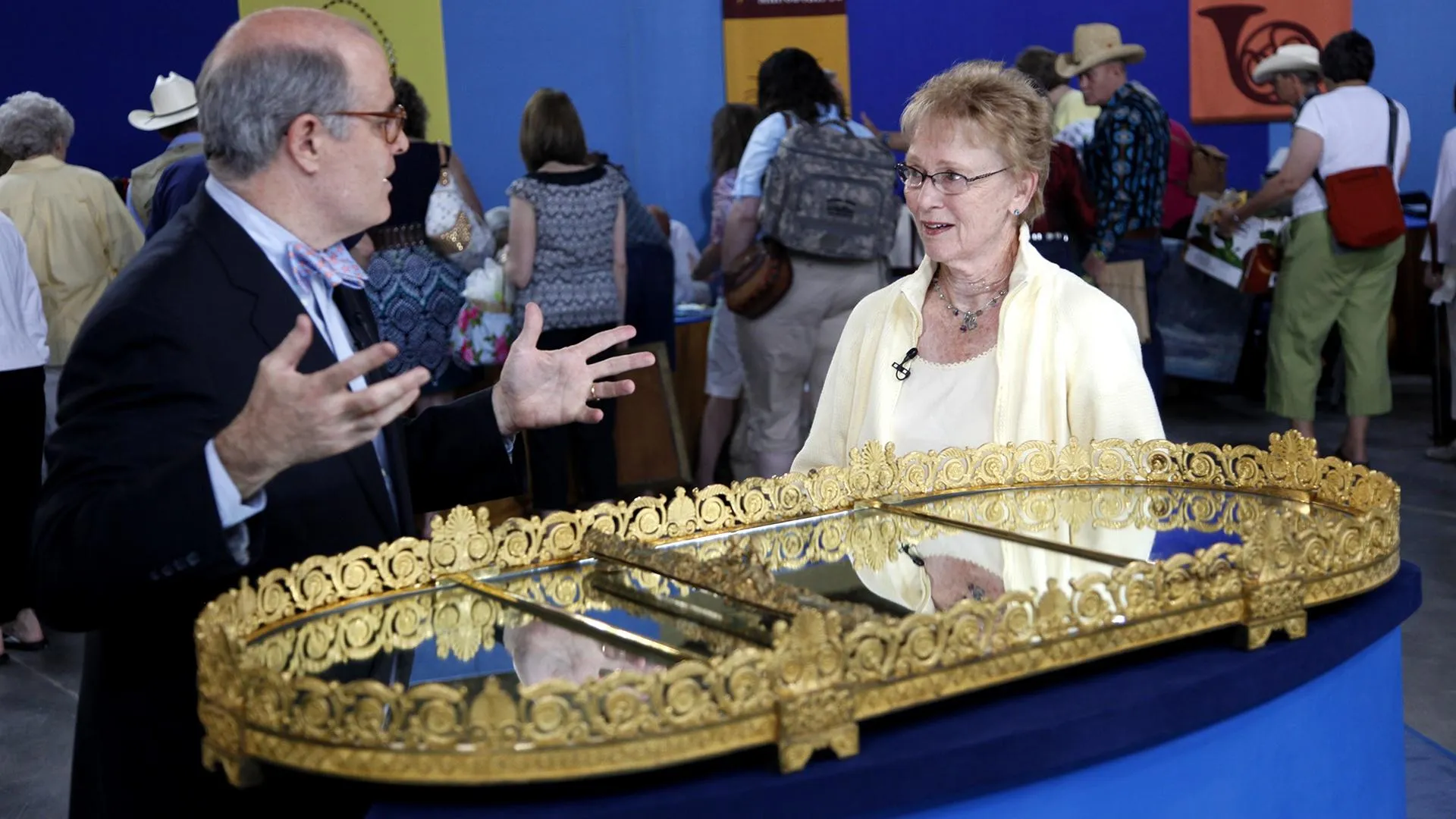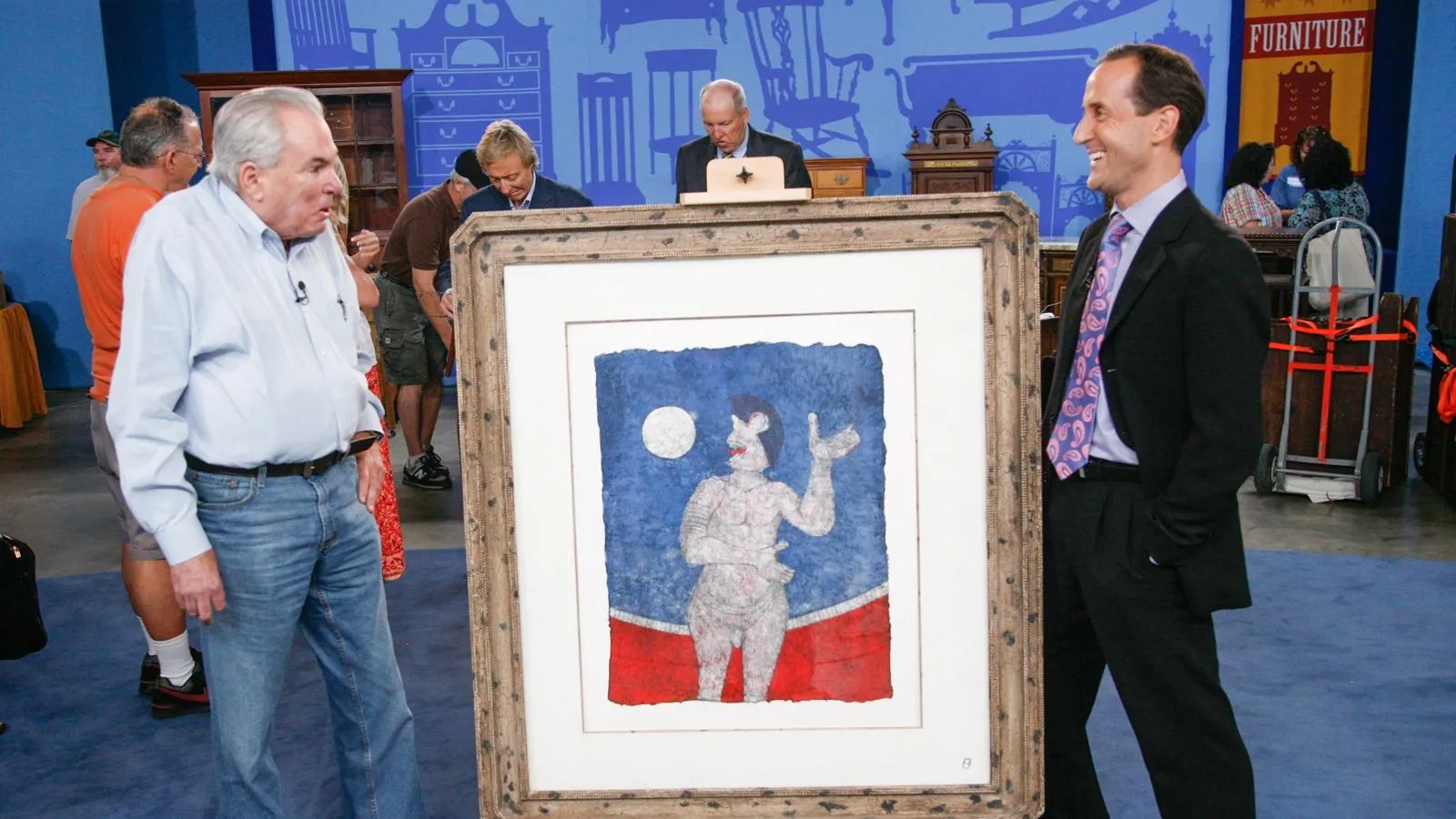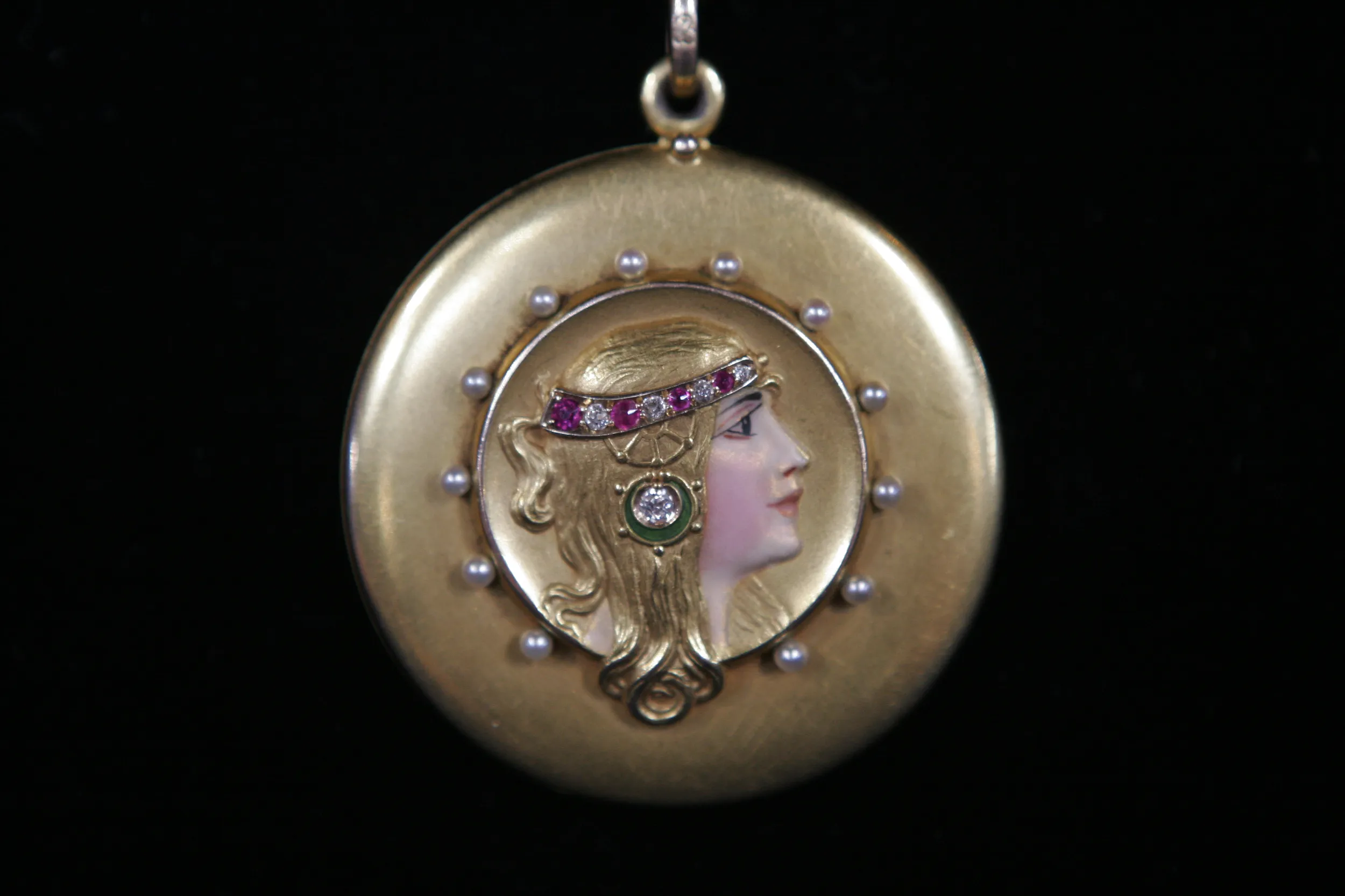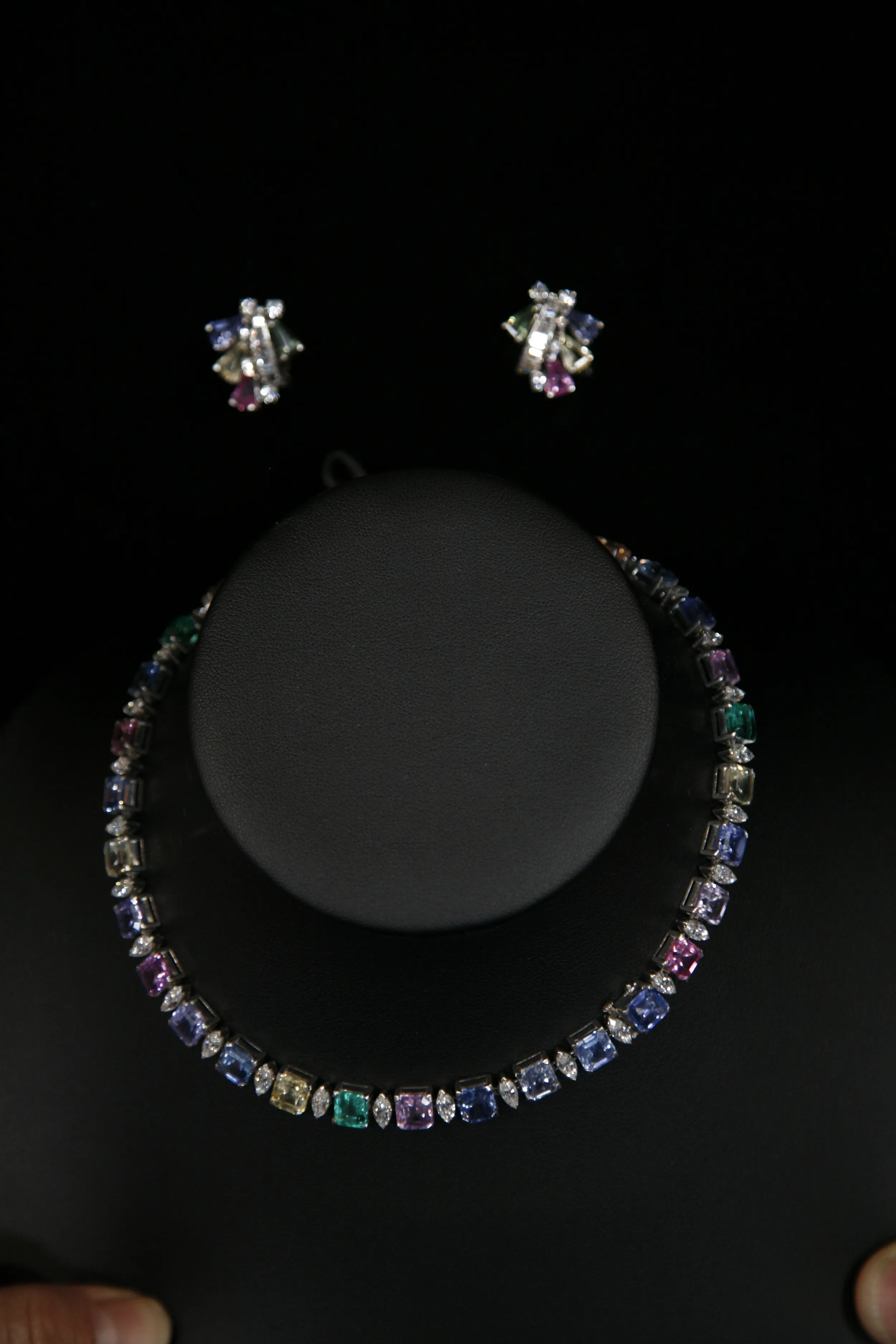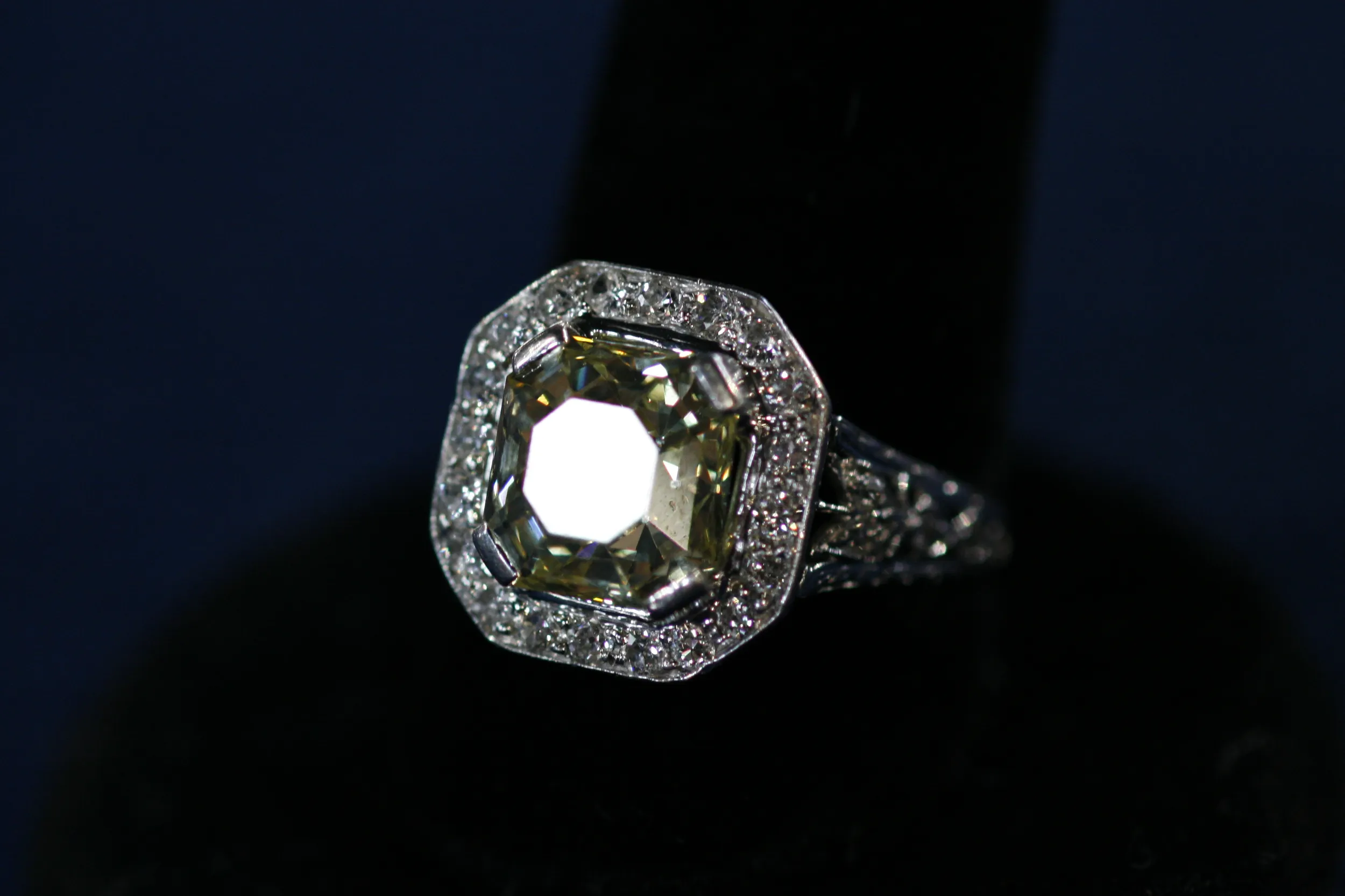GUEST: My husband's aunt left us different items of her furniture, and, and jewelry, and porcelain china. This was actually, we found it in a little shadow box table...
APPRAISER: Mm-hmm.
GUEST: ...that was given to us.
APPRAISER: Well, let me tell you a little bit about this piece. You know that it's a lorgnette. This particular lorgnette is probably one of the prettiest that I've seen. It's French. And the reason that we know it's French is that there are hallmarks right here on the hinge and on the back. In this particular instance, there's a crab. And this was a very, very popular jewel through the turn of the century and even later. The metal is platinum and, of course, diamonds and rubies. The craftsmanship on this is superb. This was made by a master house, but it was typical in the time not to have the names. Cartier would have names on their pieces. Tiffany would. But many, many very fine houses didn't put their names on. So we have no idea who made this amazing piece. Each row is rose-cut diamonds lined up next to a row of milgrains, which is very tight, tiny little platinum balls. And it's accented by calibré-cut rubies. But I want to show how the mechanism works. Whee!
GUEST: (chuckles)
APPRAISER: There we go, it opens up. Here's the front. Here's the back. And, indeed, this is how it would have been used.
GUEST: (chuckles)
APPRAISER: The detail of the workmanship is as good on the back as it is on the front, which is the sign of a really fine jewel. Do you have, uh, an idea of what this might be worth?
GUEST: I have absolutely no idea.
APPRAISER: Well, if I told you that it was worth $10,000 if you went into a store...
GUEST: Oh, my gosh.
APPRAISER: ...and you wanted to buy this, it would cost you every bit of $10,000.
GUEST: Oh, my gosh.
APPRAISER: Oh, my gosh.
GUEST: I had no idea.

